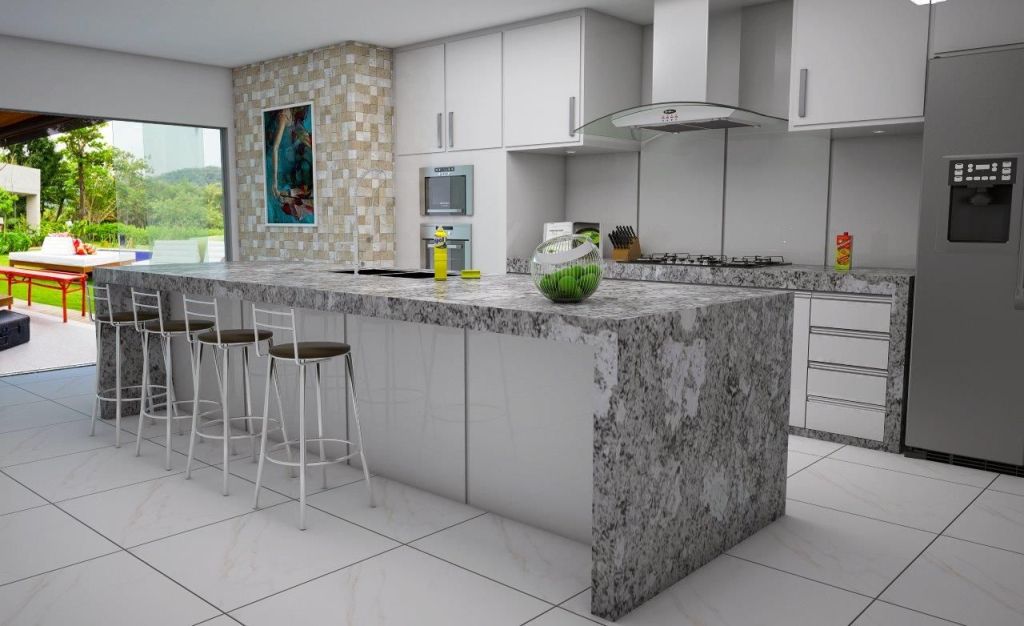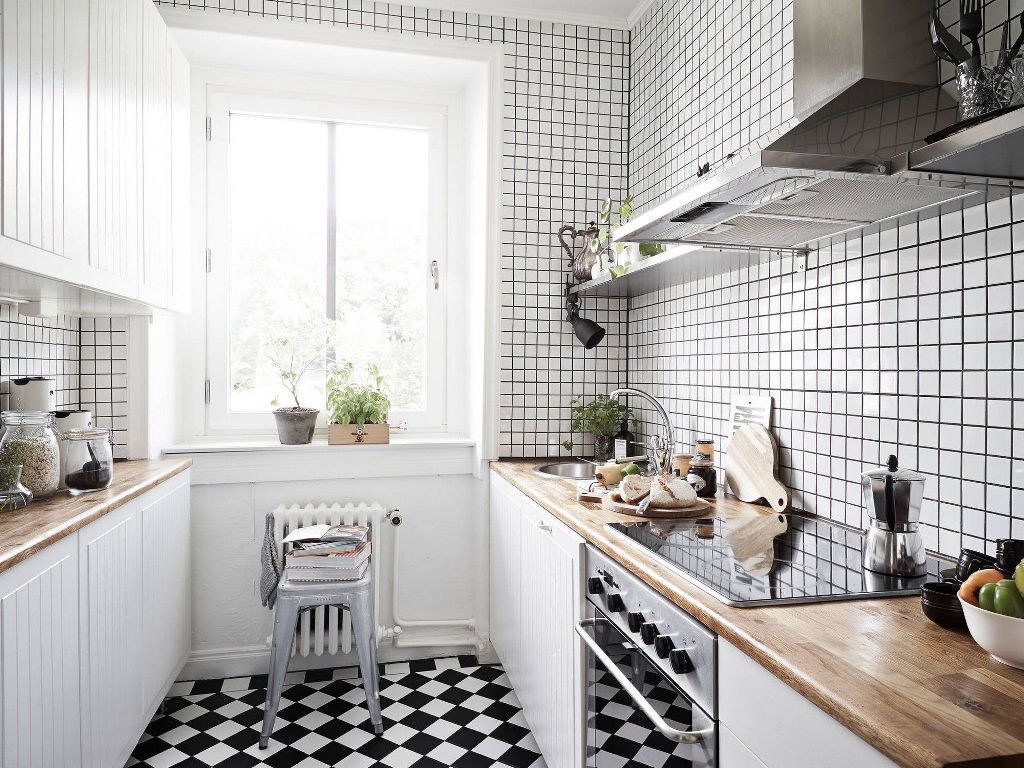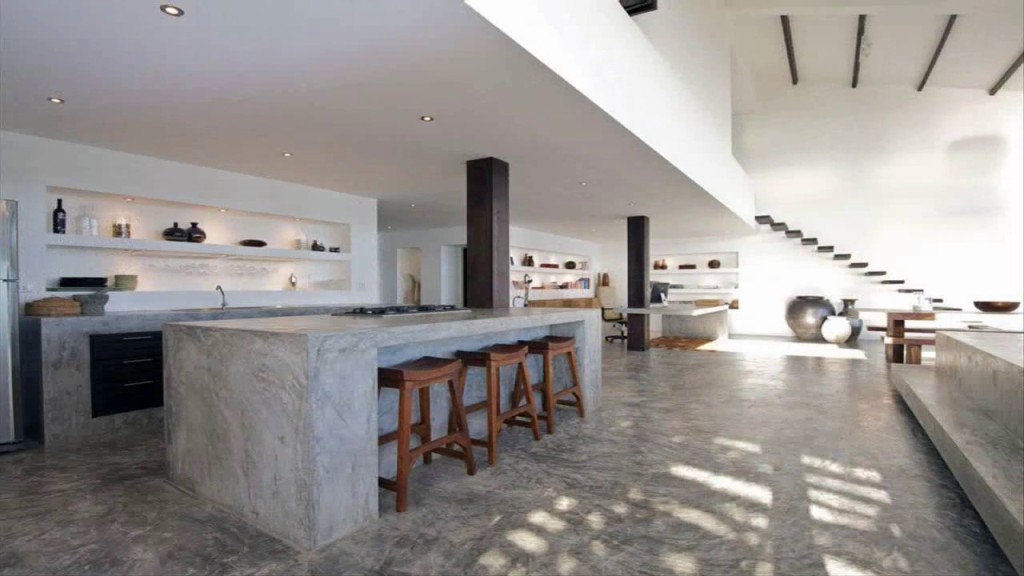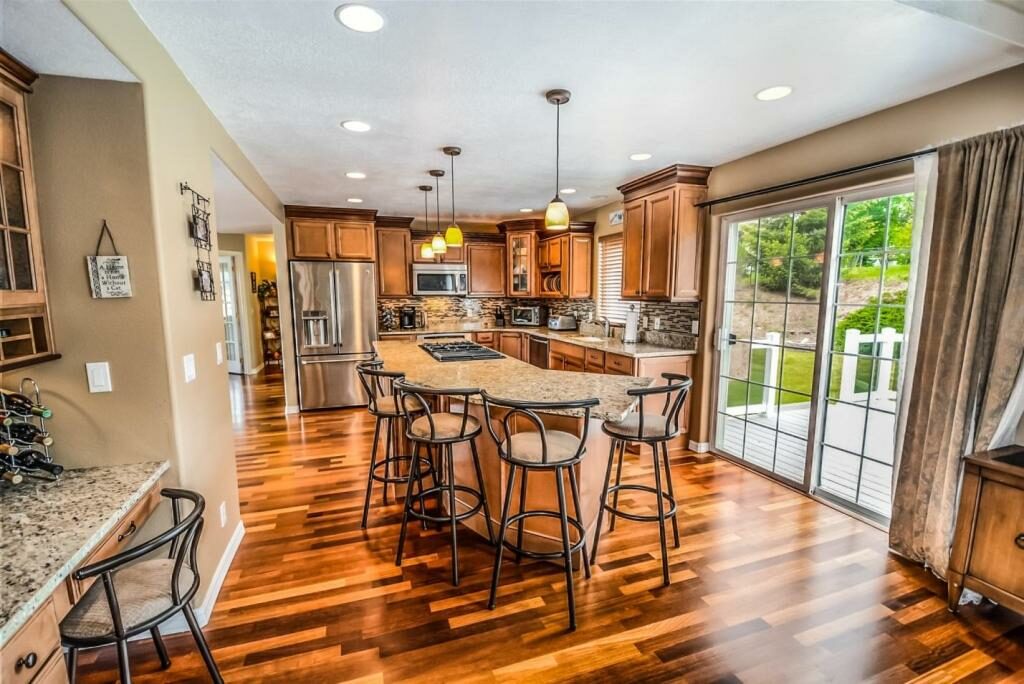Looking at kitchen flooring ideas for your kitchen? And looking for some inspiration? Discover the most popular flooring styles in 2019 now.
It’s almost time for fall, and what better time to update your kitchen flooring? Seriously! Fall is the best time for remodeling.
The kids are back in school and you have time to dream. And the weather? It’s always better to finish a home improvement project before the weather gets messy and cold.
The biggest challenge most people face when thinking about a kitchen flooring project isn’t the season. It’s choosing the flooring material.
Don’t worry, we’ve got you covered! Below you’ll find seven popular trends for kitchen floors. Here’s to inspiration!
1. The Allure of Natural Stone
For homeowners looking to create a connection to the natural world right in their own kitchen, look no further than natural stone flooring.

When shopping for natural stone, you’ll find several options including:
- Granite
- Sandstone
- Marble
- Limestone
- Slate
Each type of stone contains a unique combination of mineral. For example, limestone comes from sedimentary rock, marble from metamorphic, and granite, from igneous rock. Who knew shopping for kitchen flooring might include a geology lesson?
You won’t find anything synthetic about these elegant and luxurious kitchen flooring solutions. Each piece is a unique creation bringing the natural world into your living space.
Because they’re mined directly from the earth, natural stone tiles don’t go through a manufacturing process. No chemicals, solvents, glazes or stains required. Cutting the squares from the stone slab is the only processing natural stone flooring goes through.
For a different natural flooring experience, continue reading and discover a classic for kitchen floors—wood.
2. Create Warmth with Wood Flooring
Solid wood flooring on kitchen floors is nothing new. In fact, if you own a vintage home, you may still have the original hardwood flooring.
If you’re new to the world of hardwood, you’ll love the warm look, but you’ll also love the way a wood floor feels warm under your feet. A wood floor makes an amazing insulator—no more bunny slippers on a cold winter morning while you wait for the coffee to brew.
A wood floor literally goes with any décor. Whether you like a modern kitchen design with stainless steel appliances and accents, or prefer a more rustic look, a wood floor fits!
Wood floors are durable and forgiving. If you love your wood kitchen floor carefully, it might stay around for several centuries.
3. Vinyl Isn’t Just for Records
Remember the linoleum on the kitchen floor in your grandparent’s house? Unlike the wood floor in your antique abode, it probably wasn’t over 100 years old.
Linoleum, also called vinyl, is making a comeback.
Vinyl flooring has come a long way from the kitchen floor at Nana’s house. Now you can install luxury vinyl tile (LVT) in your modern kitchen. Advances in flooring technology mean today’s vinyl is long-lasting and can hold up under heavy foot traffic.
If you’re concerned about aesthetics, modern vinyl tiles are available in an array of colors, patterns, and designs to satisfy every taste. You can also find LTV with a textured surface. Now you can have a stone or wood look without the cost.
What about comfort? A vinyl tile floor feels softer than most other kitchen flooring options. Unless you go with rubber flooring, you won’t find anything quite as flexible or comfortable for your feet.
4. Classic Kitchens Need Tile
When you think about your favorite kitchens, do you imagine the sleek look and feel of a ceramic tile floor? Tile is a classic floor option and today more than ever, you can get as creative as you’d like with colors, patterns, and textures.

If you enjoy maintaining a pristine look for your kitchen floor, go with tile. It’s easy to clean and doesn’t need much fussing to keep it looking new. If you seal it as soon as possible after installation, you won’t deal with discoloration in the grout either.
One thing you’ll want to keep in mind when choosing ceramic tile is traction. Ceramic comes in either a glazed or unglazed finish. An unglazed ceramic tile is preferable for kitchen floors.
Tile also has amazing cooling properties. If you live in a hot environment, you’ll love the chill of a tile floor on a sizzling summer day. A tile floor could even help you save on your air conditioning bill.
5. Go Exotic with Bamboo
How much more exotic can you get when you install a bamboo kitchen floor? After all, bamboo doesn’t grow just anywhere. In fact, most bamboo flooring is sourced and manufactured in China and other Asian countries.
You might notice bamboo included in conversations about hardwood flooring options. It’s not wood at all—it’s a grass. It does, however, share some properties with wood.
Like hardwood, these floors are durable, but only if constructed from natural, un-carbonized or strand woven bamboo. Bamboo floors are easy to maintain with regular sweeping or vacuuming to catch debris. As far as wet cleaning, a damp mop and a hardwood or bamboo floor cleaning product are all you need.
6. Looking for Planet Friendly Kitchen Flooring?
When planning for new flooring, why not look for a naturally renewable option? Think cork! Cork, made from cork oak bark, grows back after harvesting.
Kitchen floors have a few specific requirements. Durability, water-resistance, stain-resistance, and easy to wash. Cork flooring is all that! Sure, it’s not as durable as ceramic tile, but it’s also kinder to your feet.
One precaution to keep in mind when preparing cork tiles for installation is surface.
You can install cork over old flooring if you smooth the surface completely. Otherwise, bumps and gaps in the subfloor will show through the new floor. If you prefer not to glue cork tiles to an existing floor, you can use a floating floor instead.
7. The Concrete Kitchen
If you rented the unfinished basement at your friend’s house, you’ve had experience with concrete floors. They’re cold and ugly.

You’re likely wondering why people choose concrete for a kitchen floor, right?
Concrete floors in the kitchen are durable, easy to maintain, and reduce allergens. Not only that, if you can dream it up, you can design it in concrete.
You might assume a concrete floor only looks appropriate if you’ve chosen an industrial style for your kitchen. Not so, in fact, you can color concrete in warm, cool or neutral hues, multi-colored, and multi-patterned designs.
A concrete kitchen floor also won’t chip, warp, or stain the way other flooring options can.
Need More Kitchen Flooring Ideas?
That was a quick tour through some of the trends this year for kitchen flooring! We hope you enjoyed it. Even more, we hope we inspired you to think outside the box when you’re ready to purchase and install your new floor.
If you’ve enjoyed this post, visit our archives. You’ll find plenty of articles on a wide range of topic including flooring and kitchen design.






